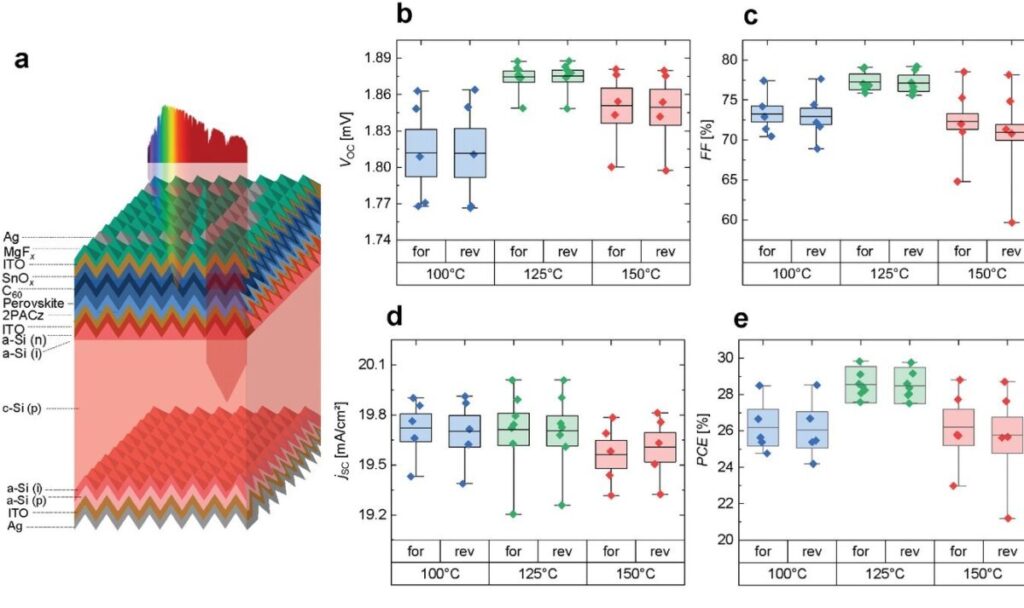Researchers from Fraunhofer Isee and Kaust built a Perovskiet-Silicon tandem solar cell that reportedly offers improved reproducibility. The device is based on self-assembled monola layers that result in low parasitic absorption and fast load extraction.
An international research team has developed a perovskiet-silicon tandem solar cell based on self-assembled monolaagen (SAMs) that improve the growth of the perovskiet and opto-electronic properties.
“Self-assembled monola layers (SAMs) are currently used as state-of-the-art hole transport layers in perovskite-based solar cells, which bid a low parasitic absorption, fast load extraction and effective passion of the buried interface of the perovskite,” said the main author told, told, told of the main author of the main author of the main author, told of the chief author’s PV -Magazine. “However, controlling their thickness, packaging density and orientation remains very challenging.”
In particular, the research team investigated the influence of an intrinsic but previously unexplored process parameter-anal temperature-on the self-assembly of a conventional SAM, namely 2pacz. “We have established that increasing the glow temperature from the conventional 100 C to 150 ° C results in a reduction in the SAM thickness of about 5 Nm to a monolaag of approximately 1 Nm, while at the same time improves the packaging density, so that both major challenges have been associated with Sam’s,” ER-RAJI explained.
The research was mainly carried out with the help of X-ray photo-electron spectroscopy with scattered electron background analysis, the scientists said that it is an effective method for studying ultra-thin layers and has a considerable potential to promote the field. “As a result, the interfacial 2pacz/perovskiet passion quality was improved, which led to improvements in the performance of fully structured perovskiet silicon tandem solar cells,” said ER-RAJI.
The academics built the tandem cell with an upper inverted perovskiet device based on an IndiumTin oxide (ITO) substrate, the 2PACZ layer, a perovskietabsorber, a Elektrontransport layer (ETL) made from Buckminsterfullere (C60),),, a buffer layer of tinoxide (snox), An ITO buffer layer, a silver (AG) metal contact and an anti-reflective coating based on magnesium fluoride (MGF2). The lower cell was based on a heterojunction (HJT) architecture.
Tested under standard lighting conditions, the champion device built with the proposed tandem configuration a power conversion -efficiency of 29.8%. “With our strategy, an increase of 1.3% power conversion efficiency is obtained in fully structured perovskiet/silicon tandem solar cells, with improved reproducibility,” the researchers said.
The new cell concept was introduced in the newspaper “Assembly of holes-selective monola’s coordination for reproducible perovskiet/silicon tandem solar cells“Which was recently published in Small methods. The research team was founded by scientists from the German Fraunhofer Institute for Solar Energy Systems (Fraunhofer ISE) and the Fraunhofer Center for Silicon Photovoltaics CSPAs well as the King Abdullah University of Science and Technology (Kaust) in Saudi Arabia.
“The study improves our understanding of SAM’s self-assembly and shows that the efficiency potential of solar cells with SAMs should not yet be fully realized,” concluded ER-RAJI.
This content is protected by copyright and may not be reused. If you want to work with us and reuse part of our content, please contact: editors@pv-magazine.com.

